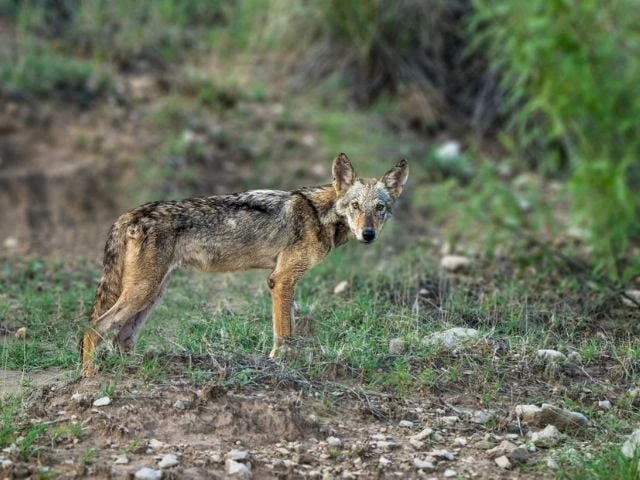Rare Indian wolf spotted in Salt Range
Wildlife dept documents species after 15 years

The endangered Indian wolf has resurfaced in Punjab's Salt Range, with the provincial Wildlife Department confirming the first-ever government-documented photographic evidence of the species in the region.
Officials say the finding marks a breakthrough in efforts to protect wildlife once considered locally extinct.
Punjab Secretary for Forests and Wildlife, Mudassar Riaz Malik, confirmed that the photograph was captured near Kalabagh by an official department photographer.
"For the first time, we now have digital evidence in government records proving the presence of the Indian wolf in Punjab," he said, terming it a milestone for conservation.
Earlier this year, on April 23, 2025, Express News aired a video of an Indian wolf near the Salt Range along the M-2 Motorway, which was later verified by the Wildlife Department.
The last documented evidence of the species in Punjab was recorded during surveys in 2008-09 at Lehri Nature Park, Jhelum, where only six individuals were identified.
Experts estimate Pakistan's wolf population at just a few hundred, the majority being Tibetan wolves found in the northern highlands. Indian wolves survive only in fragmented pockets of Punjab and Sindh's semi-arid landscapes.
Deputy Chief Wildlife Ranger for the Salt Range, Muhammad Zahid, said the photographic and video evidence indicates that the region is again becoming suitable for endangered wildlife. "Wolves play an ecological role by regulating populations of weak and sick animals," he said.
A nationwide survey of Indian wolves is underway, launched in September 2024 and scheduled to conclude in October 2025.
Covering Punjab, Sindh, and Balochistan, the study aims to map the species' distribution and produce a reliable population estimate, currently thought to range between 200 and 300.


1724919650-0/Untitled-design-(5)1724919650-0-208x130.webp)





















COMMENTS (1)
Comments are moderated and generally will be posted if they are on-topic and not abusive.
For more information, please see our Comments FAQ